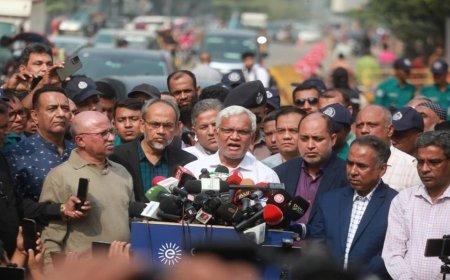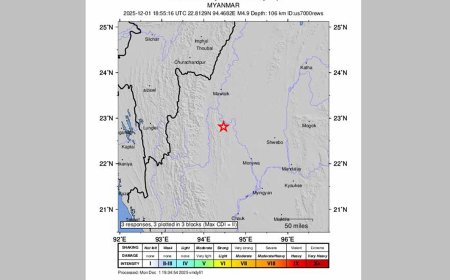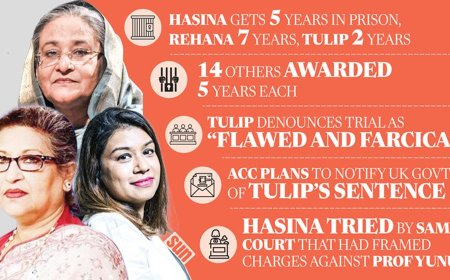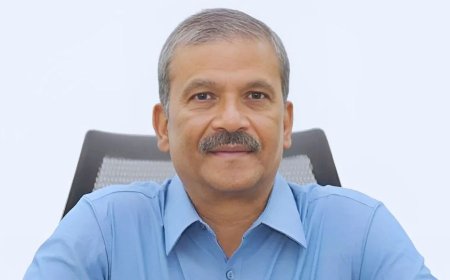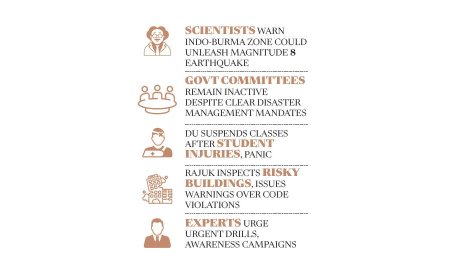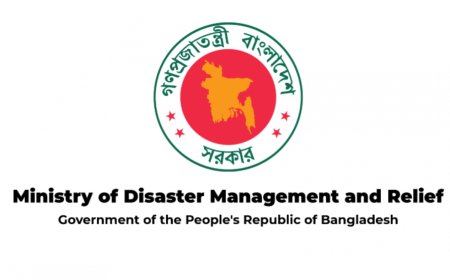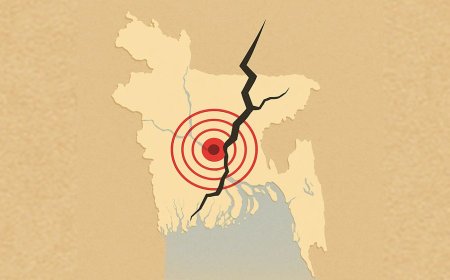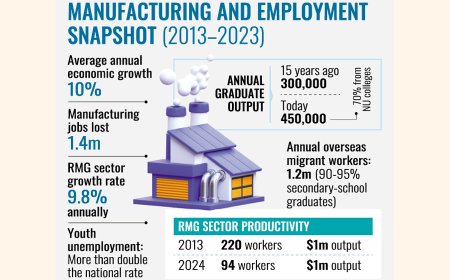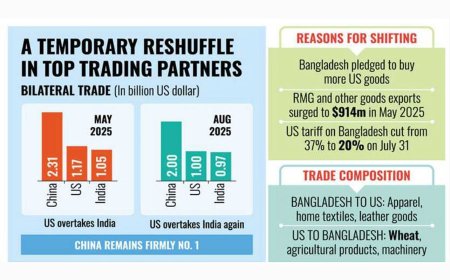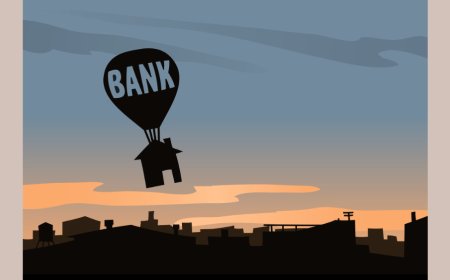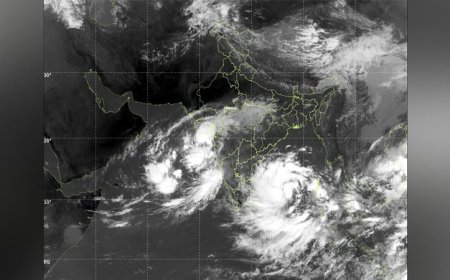More than half of all farmland falls short of sustainability standards
Just 44.37% of Bangladesh’s agricultural land meets the criteria for being both productive and sustainable.
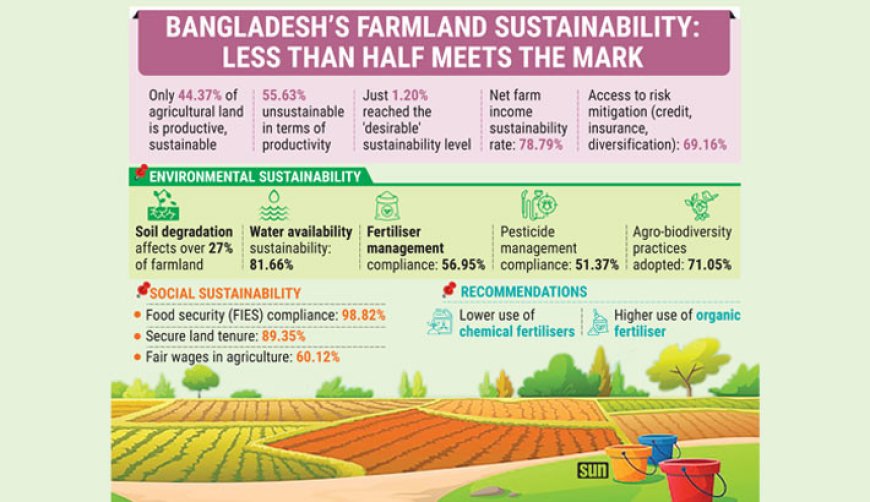
Only 44.37% of Bangladesh’s Farmland Meets Sustainability Standards: BBS Survey
According to the latest nationwide assessment, just 44.37% of Bangladesh’s agricultural land qualifies as both productive and sustainable. In contrast, a concerning 55.63% is deemed unsustainable based on a key benchmark: farm output value per hectare—a vital indicator of land productivity.
These findings come from the Productive and Sustainable Agriculture Survey 2025, released by the Bangladesh Bureau of Statistics (BBS) under the Sustainable Agriculture Statistics (SAS) Project. The survey represents Bangladesh’s first comprehensive effort to evaluate agricultural sustainability using globally recognized indicators aligned with Sustainable Development Goal (SDG) 2.4.1, which tracks the share of land under sustainable management.
The data reveals a troubling landscape. Of the land classified as sustainable, only 1.20% reached the “desirable” threshold, while 43.17% fell under the “acceptable” category. These assessments were based on 11 sub-indicators grouped under three core dimensions: economic, environmental, and social sustainability.
Chemical Overuse Eroding Farmland
Agricultural economist Jahangir Alam raised serious concerns about the declining sustainability of Bangladesh’s farmland. He attributed much of the degradation to the rampant use of chemical fertilisers, particularly urea, which has eroded soil fertility across more than half of the country’s arable land.
“In earlier times, farmers relied more on organic fertilisers, which helped preserve soil health,” Alam told the Daily Sun. “Now, with excessive dependence on synthetic chemicals, we’re not just reducing productivity—we’re slowly killing the land.”
Alam warned that overuse of chemical inputs threatens both the environment and public health, as pesticides and fertilisers enter the food chain. He urged the government to implement strong regulatory measures and promote large-scale adoption of organic fertilisers. “Without urgent intervention, agricultural sustainability will continue to deteriorate,” he said.
He added that sustainability must go beyond yield figures to include long-term soil health, responsible input use, and the preservation of land for future generations.
Economic Sustainability: A Weak Link
Among the three sustainability dimensions, economic performance appears to be the most fragile. While 78.79% of farmland met the standard for net farm income—showing profitability in at least one of the past three years (2022–2024)—land productivity remains critically low.
The fact that only 44.37% of farmland achieved sustainable output per hectare indicates that the majority of agricultural land is not delivering sufficient economic returns.
In terms of resilience, 69.16% of farm holdings reported access to risk mitigation tools such as agricultural credit, insurance, or income diversification.
Mixed Results on Environmental Indicators
Environmental sustainability yielded uneven results. Although 72.75% of land showed limited soil degradation (less than 50% affected per holding), 27% of farmland still suffers from significant degradation.
Access to water—vital for adapting to climate change—showed stronger performance, with 81.66% of farmland meeting standards for sustainable water availability.
However, challenges persist in input management. Only 56.95% of landowners adopted two or more recommended fertiliser practices, and just 51.37% met pesticide sustainability standards. On a positive note, 71.05% of farmland promoted agro-biodiversity through practices that enhance long-term ecosystem health.
Social Indicators Show Promise
In contrast to economic and environmental metrics, social sustainability indicators fared better. A remarkable 98.82% of farm households met the Food Insecurity Experience Scale (FIES) benchmark, indicating broad food access.
Furthermore, 89.35% of landholders had secure tenure rights, and 60.12% of agricultural areas provided unskilled workers with wages above the national average—a sign of economic inclusion and rural equity.
Policy Imperatives and the Road Ahead
Collected between January 20 and March 5, 2025, the data points to an urgent need for targeted interventions to boost land productivity and strengthen environmental safeguards.
With just 1.20% of farmland reaching the highest sustainability standard, the results suggest that most of Bangladesh’s agriculture sector is still in a transitional phase—meeting minimal criteria but falling short of global benchmarks.
As Bangladesh pushes toward its SDG 2.4 target under the broader Zero Hunger agenda, this report provides a robust foundation for evidence-based reforms. The BBS hopes that the findings will inform better agricultural planning and policy, especially by leveraging local-level data across economic, environmental, and social indicators.
The government, development partners, and policy-makers are now expected to use these insights to formulate strategies that not only enhance productivity but also ensure environmental resilience and rural livelihoods.
What's Your Reaction?







